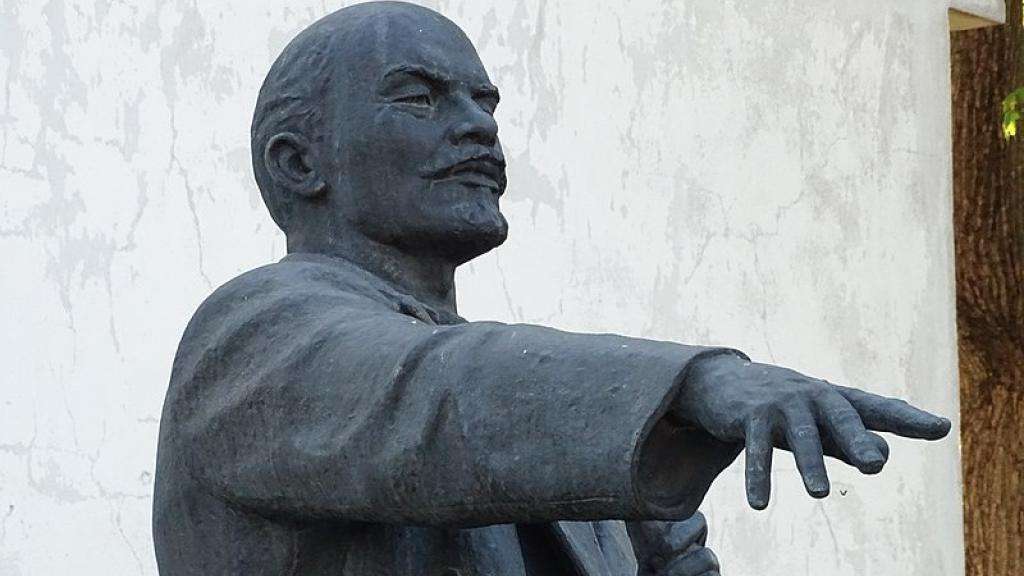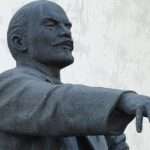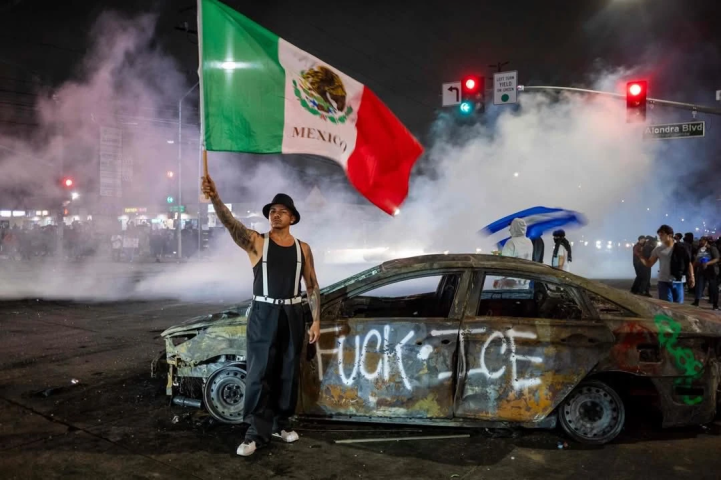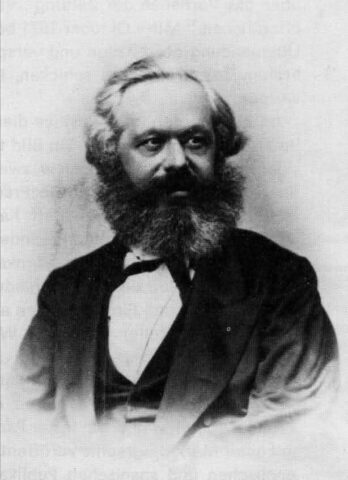
The following presentation was given by Tamás Krausz on February 1 as part of a panel on “What was socialism for Lenin?” that was part of the ongoing “Leninist Days/Journadas Leninistas” series of lectures. For more information or to register for “Leninist Days/Journadas Leninistas” visit its website here.
This contribution is dedicated to the memory of Alexander Buzgalin (1954-2023), an outstanding dissident Communist and Marxist economist of the Soviet and post-Soviet period.
Rethinking Lenin
Today, when a student sits an entrance exam to learn history at university, it is not certain that he/she can answer the question: Who was Lenin? Many bourgeois historians and textbooks define him as a failed lawyer, an angry journalist, terrorist, dictator, German agent, etc. In the socialist era in Eastern Europe and the Soviet Union, he was cultically described as an infallible thinker and statesman.
In fact, Vladimir Ilyich Lenin was a professional revolutionary for whom science and Marxist theory served only as fundamental tools for the social liberation of the oppressed classes. As a successor to Karl Marx, in the face of the social-democratic developments that followed, at the beginning of the 20th century he rehabilitated and reconstructed against revisionism the anti-capitalist economic and political message of the Marxist legacy; that is, the practical realization of socialism. That was the core of modern communismand the main message of the Russian revolution in 1917.
Why is the Russian revolutionary experience so important in the West? Because the West has never accomplished a successful socialist revolution. For decades, the main tendencies of Western Marxism criticized the Soviet Union — the so-called “really existing socialism.” At the same time, however, they handed down almost no practical experience of the concrete realization of socialism to their followers. Not even in the period of the great revolutionary upswing of 1968 were the Western European Communist parties able to develop a usable socialist economic program. In this way they contributed to the later elimination of socialism as a movement.
Lenin’s revolutionary legacy has been transformed into an intellectual legacy, which the new generations can acquire, according to their own experiences. It is easy to talk about this option, but the methods of acquisition are all the more difficult.
Without socialist mass movements we will get nowhere. In fact, the history of the 20th century is full of such socialist movement experiments: think of the workers councils in Russia, Germany, Spain, Hungary; of the Cuban and Nicaraguan revolutions; of the Mexican Zapatistas; of the socialist experiences in Chile and Uruguay, etc. From this practical point of view, it is important to “reconstruct”, “rehabilitate” and “rethink” Lenin’s legacy for those who are interested in a better world beyond capital.
Lenin left to the workers of the world the revolutionary objectives and practical experiences with which they can defend themselves even today against the world of capital. But we live in a different world. Without the Soviet Union the world system has become more unequal and more violent and the socialist perspectives have become even more obscure.
Learning from failed socialist experience
What have we learned from our failed socialist experience in Eastern Europe and in the Soviet Union?
First of all, Lenin many times — in different periods — underlined that socialism cannot be “introduced”. After the socialist revolution, a whole historical period is needed to “learn” the practice and culture of direct democracy and workers’ self-governance.
The creation of a new culture is the main function of the mixed economy of the transitional period to socialism. We are referring here to a socialist-oriented mixed economy, within which capitalist enterprises and practices played a role. We have learned from Lenin that socialism is not market. Socialism is the satisfaction of the needs of the individuals and communities according to the work based on their abilities — without the tutelage of capital and the state.
But historical reality, theoretical considerations and practical possibilities came into inevitable conflict on the second day of the October revolution. All great conflicts and contradictions were rooted in this fact in one way or another: that “Russian backwardness” (semi-peripheral development), which facilitated the cause of the revolution, was a long way from accomplishing the realization of socialism outlined in Marxist theory.
Lenin was quite conscious of this reality. The direct realization of socialism was transferred to the distant future, while concessions were made to the system of market economy. Each and every party debate and power struggle in the 1920s, in one way or another, flowed from this fact.
In 1921, capitalism was partially (though only partially) restored in 1921 with the New Economic Policy (NEP). Thus, various forms — small proprietors, the state capitalist sector, the state socialist sector, and the sector of self-governing cooperatives — coexisted in a system called in the literature a socialist mixed economy. In Lenin’s view, this form constituted a transitional period to socialism.
As Lenin emphasized many times after the socialist revolution, a whole historical period is needed to “learn” the practice of direct democracy and self-governance, which is the main function of the multisectoral mixed economy of the transitional period. He wrote:
Now we are entitled to say that for us the mere growth of cooperation . . . is identical with the growth of socialism, and at the same time we have to admit that there has been a radical modification in our whole outlook on socialism. The radical modification is this: formerly we placed, and had to place, the main emphasis on the political struggle, on revolution, on winning political power, etc. Now the emphasis is changing and shifting to peaceful, organizational, “cultural” work. I should say that emphasis is shifting to educational work, were it not for our international relations, were it not for the fact that we have to fight for our position on a world scale.1
The years 1928-33 marked a turning point in the history of the NEP and socialism. The multisectoral economic system was abolished with Joseph Stalin’s “revolution from above”. The Stalinist dictatorship swept away — along with the institution of private property — the “islands of socialism”.
At the level of political propaganda, the realization of socialism was declared as accomplished in the 1936 Constitution. In reality, however, a new social and economic system was established, which some of us refer to as state socialism. The study of this phenomenon is an important topic for us everywhere.2
Lenin had posited his own “three-step” concept in his 1917 work The State and Revolution — in which socialism, as the “lower phase” of communism, is preceded by a “transitional period”. But he could not have known that the Russian Revolution would be left on its own, with the failure of the socialist revolutions that had been expected to materialize in Germany and elsewhere. As a result, theoretical socialism as a practical project was canceled, and what was realized was a kind of “state socialism” in its peculiarly Russian form. This was something that he would have — to the utmost — wanted to avoid.
Market socialism?
The experiences of economic reforms in the socialist countries of Eastern Europe show that “state socialism plus market economy” reforms failed. We could also see this happening in the perestroika (restructuring) period of the Soviet Union under Mikhail Gorbachev in the late 1980s, when state socialism turned into “market socialism” — that is, to capitalism.
In the process of the so-called regime change at the end of the 1980s, certain groups of the Communist Party bureaucracies in Eastern Europe and the Soviet Union totally eliminated Lenin’s practical legacy along with the state socialist system, culminating in the destruction of the Soviet Union.
István Mészáros gives an ample summary of the characteristics of market socialism. Most importantly, he unmasks the common motives of social democratic thinking and the Stalinist tradition in their similar “superstitious” way of relating to state and market.
Both camps rigidly positioned themselves in opposition to the conversion of state property into communal property. Both the traditional forms of labor division and the power of disposing with the surplus value remained within the scope of the detached apparatus. Every experiment that tried to reform this was undermined by the leaders of the party, even though Lenin had founded the party with exactly the opposite aim.
Though the later forms of market socialism were advertised as reformed state socialism, the first (market socialism) proved to be an evolved state of the second (state socialism), which in the end led to capitalism. Lenin’s approach was different. It involved the conception of socialism founded on autodynamic — self-generating — popular forces and needs-based production: direct democracy, cooperative ventures, and the “cooperative system” of producer and consumer collectives.
Stalin and his comrades, and the power elites of post-Stalin period, neglected this core of the socialist project. For them socialism meant “state power,” which Lenin criticized so radically in State and Revolution.
No way out without a new workers’ movement
Lenin was the first Marxist — along with Rosa Luxemburg — to analyze the hierarchical-colonial structure of the imperialist world order. He was aware the limits of Russian historical development imposed strong constraints on the Russian path to socialism. Yet he launched a whole series of experiments that revealed the possibility of a society beyond capitalism for humanity. To put it succinctly, this is the historical significance of Lenin’s legacy.
The complicated history of state socialism and its experience shows us, especially today, that even in this imperfect form it brought important social and cultural achievements for the subordinated classes in Eastern Europe and the Soviet Union. The main lesson still is that these achievements can only be permanent if the workers take state property under their direct control through their own organizations.
Lenin’s socialism was aimed at changing society and politics as a whole, because he knew that any partial approach would imply the possibility of regression, of restoration. He therefore did not think highly of a policy that was devoid of the ideals of socialism.
One might add that there was nothing, for him, like “green socialism” or “socialism of identities-based minorities,” etc. Similarly, Lenin did not believe in “medieval socialism” or other such hybrids in his conception of anti-colonialism. He favored a real anti-imperialist movement that looked ahead, that did not represent the premodern, superstitious world but the world of enlightenment, humanism, dialectical and historical materialism, with humanity at its center, and the emancipation of the women and men and the oppressed classes.
Lenin’s work will remain a force of giant significance for the peoples of the world until the realization of socialism, since there has been no other relevant alternative to capitalism throughout the previous centuries. We understand that the socialism-communism that Lenin fought for is only a historical opportunity, a possible alternative and necessity against the genocidal world order of capitalism. Its realization depends, first of all, on the subordinated classes to which we belong.
12 March, 2024
![]()




